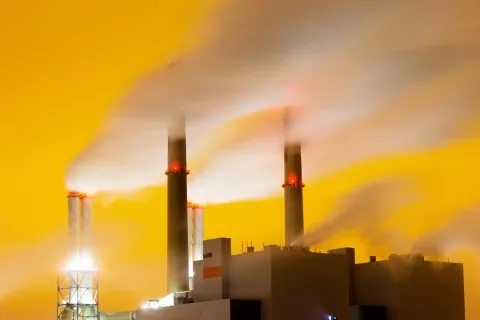
Asia's carbon reduction policies moving along
But there's more to do.
It has been noted that adopting policies or a strong regulatory environment which encourages the incorporation of cleaner energy fuels into the regional power mix - nuclear and renewable energy in particular - will lessen Asia's reliance on carbon-intensive coal.
According to a research note from BMI Research, governments across Asia are keen to expand or kick-start their domestic nuclear industries, as evidenced by the ambitious nuclear programmes in the region and governments' ongoing commitment to the technology.
The report forecasts nuclear power capacity in Asia to more than double over the next 10 years, as countries move ahead with their nuclear agendas - with China, India, South Korea being the most dynamic examples.
Asia's pipeline of nuclear reactors planned and under construction is sizeable, with over 40% of the reactors being built globally located in Asian countries, as of February 2015.
Here's more from BMI Research:
We have also seen significant gains in Asia's renewables sector, despite some policy slippage in the more developed markets, such as Australia, South Korea and Japan.
Asia is the fastest growing region in the world for renewables capacity additions and we forecast total non-hydro renewables capacity to increase by more than 110% between 2015 and 2024.
Various countries' renewables industries have grown in attractiveness, as conducive policy - including subsidy schemes - and strong government commitment to renewables, in the form of Renewable Energy Targets (RET), have encouraged investment into the sector. In particular, we note that India, Indonesia, Thailand and the Philippines are all making headway with renewables expansion.
Despite these advances in the adoption of emissions reduction policies and the recent tangible progress with power mix diversification in Asia's largest market, China, we reiterate that increased efforts need to be made across the Asian energy markets if a significant reduction in global emissions can be achieved.
In this context, we believe the upcoming UN Paris conference in December 2015 (UN COP21) - which aims to establish a legally binding and universal target on climate change mitigation covering all countries - will provide added impetus to the implementation of emissions regulating policies in Asia.
As part of the UN COP2 1, countries taking part in the negotiations must outline post-2020 climate goals that they intend to adopt under a new international agreement and are known as 'Intended Nationally Determined Contributions' (INDCs).
We expect the three policy initiatives outlined above to feature heavily in the region's INDCs, providing momentum to the implementation of existing initiatives and building on the progress already made.













 Advertise
Advertise











